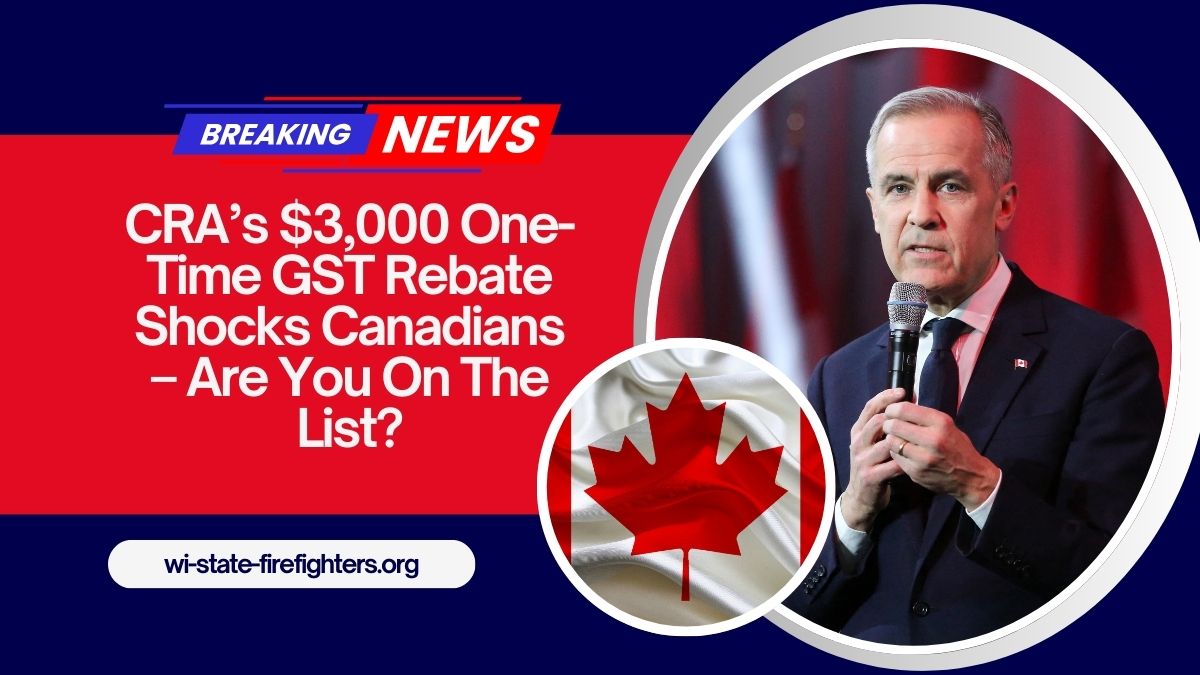In an effort to combat the rising cost of living, the Canada Revenue Agency (CRA) has introduced a one-time GST rebate of up to $3,000, offering direct financial assistance to low and middle-income Canadians.
This rebate is distinct from recurring benefits like the GST/HST credit or Child Benefits, and is designed to provide immediate relief during a period of heightened inflation and economic uncertainty.
Let’s break down everything you need to know about this special GST rebate, including eligibility, payment dates, and how to claim the funds.
What Is the CRA $3,000 One-Time GST Rebate?
The CRA’s one-time GST rebate is a targeted financial relief initiative that helps eligible Canadians cope with inflation, higher product prices, and overall economic hardship.
While the actual base amount is $250 per eligible person, the total rebate for households with dependents or multiple qualifying members can add up to $3,000.
This rebate differs from standard benefits as it provides one-time support rather than recurring quarterly deposits.
Why This Rebate Matters
This rebate:
- Acts as a supplementary payment in addition to the regular GST/HST credits.
- Supports households not covered by other federal or provincial programs.
- Helps reduce the tax burden and covers increased expenses like groceries, utilities, and medical costs.
CRA $3,000 GST Rebate Eligibility Requirements
The CRA has outlined several criteria for eligibility. These are designed to target the rebate to Canadians most affected by economic strain.
| Eligibility Criteria | Requirement |
|---|---|
| Citizenship/Residency | Must be a citizen, permanent resident, or valid visa holder |
| Income Range | Aimed at low and middle-income groups (no exact income threshold, but higher incomes receive reduced or no benefit) |
| Tax Filing | Must have filed the latest tax return with CRA |
| Age Requirement | Must be 19 years or older at time of payment |
| Household and Family Status | Families with children or dependents may receive more |
| Additional Conditions | Must be living alone, or with a spouse/common-law partner. Children (if any) must be under 19 and listed on the GST/HST credit claim |
CRA GST Credit Payment Dates – 2025
While the $250 one-time rebate is separate, those qualifying may also be eligible for the quarterly GST/HST Credit issued regularly by the CRA.
| Quarter | Payment Date |
|---|---|
| April 2025 | April 4, 2025 |
| July 2025 | July 5, 2025 (expected) |
| October 2025 | October 4, 2025 (expected) |
| January 2026 | January 3, 2026 (expected) |
These quarterly payments help offset taxes paid on goods and services, while the one-time $250 or more acts as a booster in May 2025.
How to Claim the One-Time GST Rebate
Claiming the $250 one-time GST rebate does not require a separate application process for most eligible individuals. Here’s how it works:
- Already Eligible?
If you’ve already filed your taxes and qualify based on CRA records, you’ll receive the payment automatically. - Payment Method:
Direct deposit to your registered bank account or by mailed cheque. - Problems Receiving It?
If you experience delays or believe you qualify but haven’t received the rebate, contact CRA directly.
Additional Financial Support – April 2025 GST Credit
In addition to the $3,000 cumulative one-time GST support, Canadians may also receive the Canada GST Credit in April 2025. This is part of the regular quarterly GST benefit and provides ongoing relief to help with living costs and tax burdens.
The CRA’s $3,000 One-Time GST Rebate serves as a vital support measure in 2025, ensuring that Canadians—especially those on limited incomes—can better manage rising costs.
Whether you’re receiving the standard $250 payment or a higher amount due to family size, this rebate reflects the government’s commitment to providing economic relief during uncertain times.
If you meet the eligibility criteria, have filed your taxes, and are a resident of Canada, you’re likely on the list to receive this much-needed financial support. Make sure your banking and contact information is up to date with CRA to avoid delays.
FAQs
Is the $3,000 rebate amount fixed for everyone?
No, the full $3,000 is a maximum potential amount based on household size and number of dependents. Most individuals will receive $250, and families may receive more.
Can newcomers to Canada qualify?
Yes, if they meet the residency, age, and tax filing requirements, and have legal status in Canada.
What if my income is too high?
The rebate is aimed at low-to-middle income Canadians. Higher-income individuals may receive a reduced amount or may not qualify at all.

